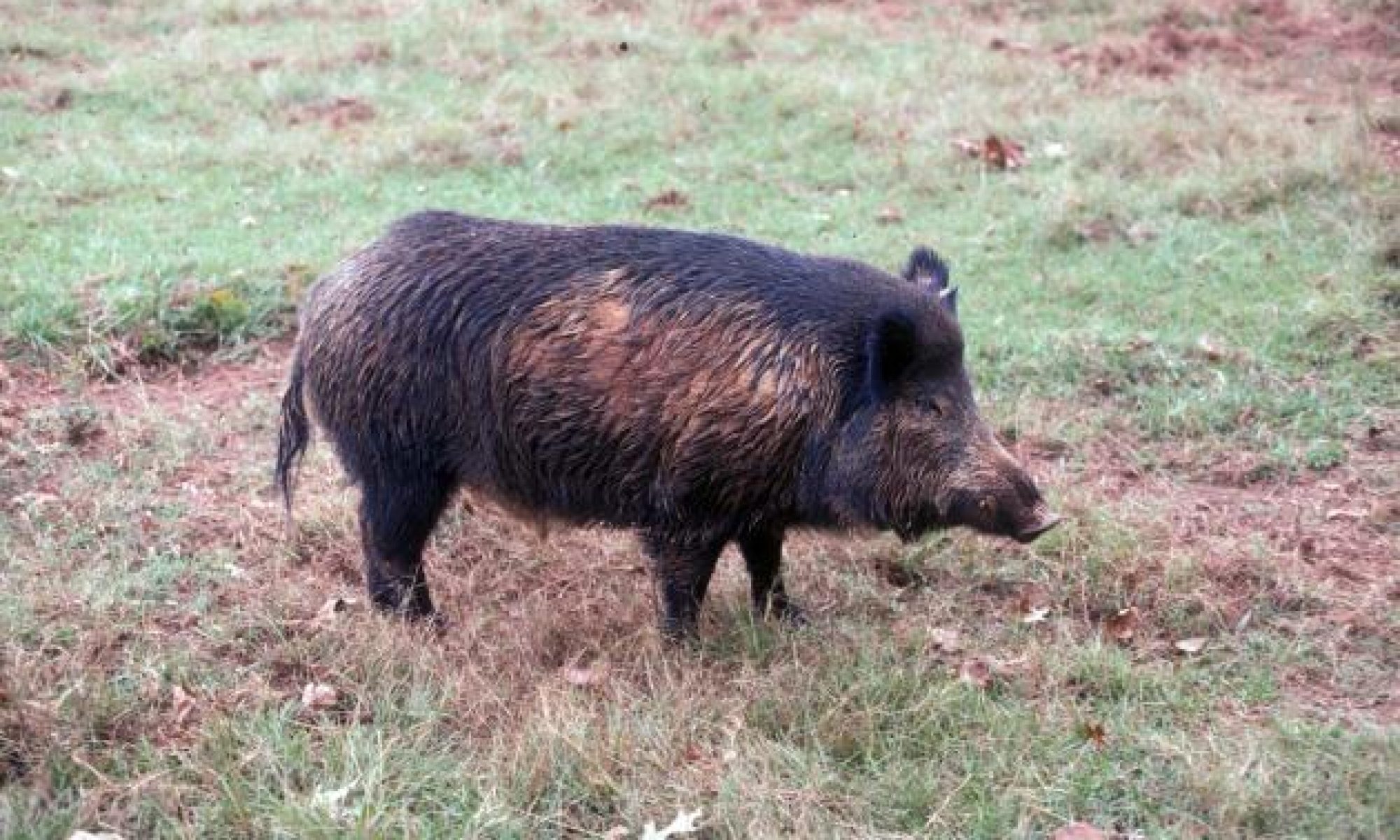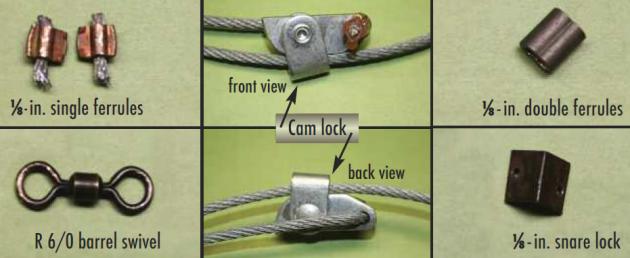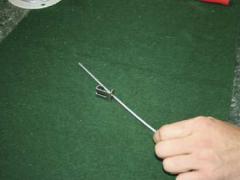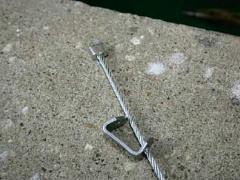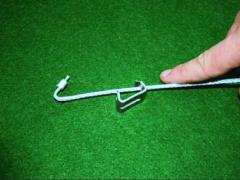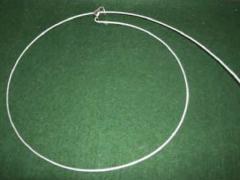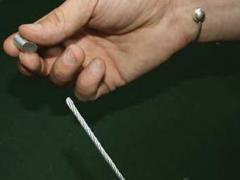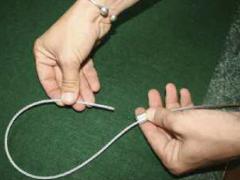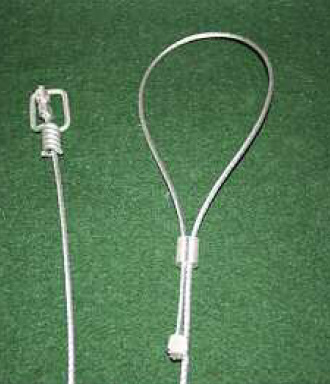Feral hog snares can be a beneficial tool for controlling feral hogs. They are relatively inexpensive, simple to build with minimal tools needed, and highly adaptable to terrains where corral or box-type traps are not easily deployed. They also work well for trap-shy feral hogs. It is important to remember, however, that snares can trap non-target species, such as deer. The trapper should take precautions in the deployment of snares to minimize this effect.
Tools and Materials for Constructing a Feral Hog Snare
-
Needle-nose pliers
-
Hammer
-
Wire cutters
-
Tape measure
-
10 ft of 1/8-inch steel cable
-
Two 1/8-inch single ferrules
-
One 1/8-inch double ferrule
-
One R 6/0 barrel swivel
-
One 1/8-inch snare or cam lock
|
|
|
Figure 1. Materials for feral hog snare. Photo courtesy of Texas AgriLife Extension |
Assembling the Snare
The cable used to make snares has a natural lay, or memory; do not go against the memory when working with snares.
|
|
|
Figure 2. Run the cable through the lock. Photo courtesy of Texas AgriLife Extension |
1. Push the cable through the snare lock (Fig. 2). A 1/8-inch snare lock is used for this snare; however, there are many other snare lock designs.
|
|
| Figure 3. Attach ferrule on the end. Photo courtesy of Texas AgriLife Extension |
2. Crimp a single ferrule to the end of the cable (Fig. 3) using fencing crimpers or a hammer on a hard surface.
|
|
|
Figure 4. Bend the end of the snare. Photo courtesy of Texas AgriLife Extension |
3. Make a reverse bend in the cable just beneath the ferrule with needle-nose pliers (Fig. 4) to help secure the lock. This will be the only bend against the memory of the cable.
 |
|
Figure 5. Load the snare with the memory of the cable. Photo courtesy of Texas AgriLife Extension |
4. Load the snare with a durable round or cylindrical object such as a pipe, vice handle, or trailer ball (Fig. 5). It is important that the natural memory of the cable is followed when loading the snare. Load the snare only 8-10 inches beyond the ferrule stop. Loading the snare serves two purposes: 1) it makes a more circular shape, which is important to capture animals with large, pointy ears like those of hogs, and 2) makes it close much more easily and freely.
|
|
|
Figure 6. Load the snare. Photo courtesy of Texas AgriLife Extension |
 |
| Figure 7. Snare that has not been loaded. Photo courtesy of Texas AgriLife Extension |
5. Pull the snare back and forth, applying firm pressure near the stop while gradually lessening the pressure down the cable near the 10 inch mark (Fig. 6). An unloaded snare has a teardrop shape (Fig 7); while a loaded snare is much rounder (Fig. 8).
|
|
|
Figure 8. Snare that has been loaded. Photo courtesy of Texas AgriLife Extension |
6. Construct the snare end so that it can be attached to a tree, post, or drag. An adjustable end was made for this snare, which allows attachment to various sizes of objects. For an adjustable end snare slide a double ferrule over the end of the cable (Fig. 9), and then run the cable back through the double ferrule (Fig. 10).
7. Attach a single ferrule to the end with a hammer or crimpers (Fig. 11). Using two single ferrules, for strength, a swivel end may be attached (Fig. 12). The adjustable end is beneficial because it can be opened, and the snare loop can be wrapped around the rub or tree and then back through the snare end, attaching the snare to the rub or tree.
|
|
|
Figure 9. Slide a double ferrule on end to make adjustable end. Photo courtesy of Texas AgriLife Extension |
|
|
|
Figure 10. Run the end back through the double ferrule creating an adjustable loop end. Photo courtesy of Texas AgriLife Extension |
|
|
| Figure 11. Crimp a single ferrule on end of snare to complete the adjustable end. Photo courtesy of Texas AgriLife Extension |
|
|
|
Figure 12. Swivel end on left and adjustable end on right. Photo courtesy of Texas AgriLife Extension
|
